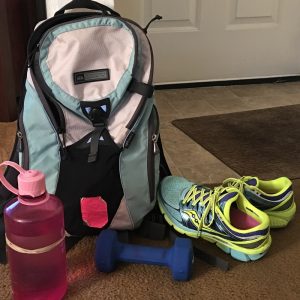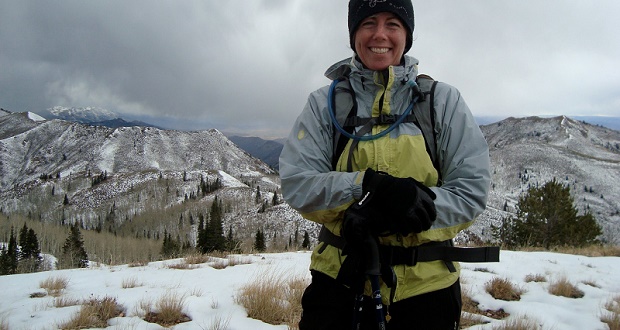I’ve been doing a lot of outdoor workouts of late, squeezing them in between bouts of rain, sleet and hail (thank you weather radar!).
It’s been a while since I’ve be running and my body doesn’t feel quite ready for a lot of distance yet, so I’ve gone back to a trick from my hiking days in Salt Lake City.
For me, working out is about getting the endorphins, or feel-good hormones, flowing. That requires working up a sweat and, since running long distances is not in the cards for me yet, I have been alternating short runs (20 minutes) with long walks (60 minutes) carrying a backpack with weight — around 10 pounds, give or take.
 The research done on carrying weight while walking is fairly light but, depending on how much you carry and how intensely you walk, you can increase your calories burned by 12 to 50 percent.
The research done on carrying weight while walking is fairly light but, depending on how much you carry and how intensely you walk, you can increase your calories burned by 12 to 50 percent.
Just to be clear, this is different than the wrist and ankle weights of the early 1980s that some continue to use, and which I strongly discourage. Carrying weight at the end of your limbs increases the stress on the delicate tendons and ligaments, making it more likely you’ll experience tendinitis conditions.
When you wear a backpack, on the other hand, the weight is distributed over a large area with stronger muscle and tendon groups sharing the load. Carrying a weighted backpack can be a nice way to prepare your body for running because it begins to train the tendons and ligaments that will take the brunt of the pounding.
Tendons need to be elastic and ligaments need to be strong; the stress (the good kind of stress) imparted by carrying weight starts to build up these tissues so they can do their job properly.
When spring comes, my body will be ready to run longer distances without too much complaining. At least, that’s my plan. I’ll let you know how it turns out!
 If you are new to walking, do not carry weight until you can cover a mile or so without any discomfort in your back or lower extremities.
If you are new to walking, do not carry weight until you can cover a mile or so without any discomfort in your back or lower extremities.
If you’ve been walking regularly and you want to try adding some weight, start small. Three to five pounds is a good starting place, and hand weights or water bottles are a good way to add weight to the pack.
As a rule of thumb, 16 ounces of water weighs about a pound. The nice thing about using water is you can ditch it midway through your walk if you over packed. When I was climbing mountains in Salt Lake City, I loaded my backpack up with water bottles and rocks for the ascent, and then unloaded as much as possible for the descent. This kept the load on my knees to a minimum; you always want to be kind to your knees.
 The one downside to carrying the weight in a pack rather than your hands is that your arms don’t directly see the benefit. You can try hiking and walking poles especially if you’re taking on dirt roads or trails. Poles give you a tremendous amount of stability and,when sized and used correctly, offer a nice upper body workout. If new to poles, be careful that you don’t overwork the wrists, elbows or shoulder.
The one downside to carrying the weight in a pack rather than your hands is that your arms don’t directly see the benefit. You can try hiking and walking poles especially if you’re taking on dirt roads or trails. Poles give you a tremendous amount of stability and,when sized and used correctly, offer a nice upper body workout. If new to poles, be careful that you don’t overwork the wrists, elbows or shoulder.
If you’ve had jointback or issues, check with your doctor before changing your exercise routine. Don’t add weight while you’re running, as the extra pounding can be very damaging to the body unless you’re young and have lots of muscles to protect the bones and joints.
If you see me out and about in Oakhurst with my pack and my dog, give a wave!
Virginia Eaton is a health and fitness coach helping people health priorities.




